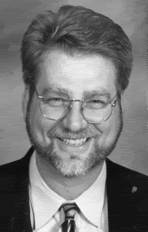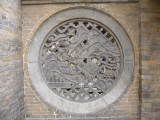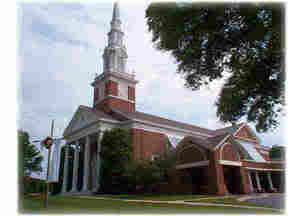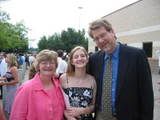the living jesus (easter)
The women rose early in the morning. They were awakened, perhaps by grief, for it was still dark. So much had happened in the last few days. These very women had been present at the crucifixion and at the burial. They had made a plan to meet together, to complete the burial arrangements that had been interrupted by the Sabbath. They knew the place of the tomb. They had set aside the spices they would take to anoint the body. This was a simple gesture of honoring the dead, an act of duty, obligation, but also something they wanted to do, something they needed to do. They were not in the inner circle of the disciples, but when it came to the end, if it was going to get done, they were going to do it.
Early in the morning they set out for the tomb, with a simple plan: Jesus had died, he had been buried, and they would take care of his body.
At this place in the story we come to a turning point. When the women arrive they discover that the body of Jesus is missing. The stone covering the entrance to the tomb has been rolled away. There are two men present, dressed in dazzling clothes, and careful readers of the New Testament are reminded of Jesus’ transfiguration, in Luke 9, and of his ascension, in Acts 1, Something astonishing is happening here. It is as if we have gone from black and white to color (I realize that dates me…how many younger people have really ever seen a black and white television?)
The Bible contains a number of these experiences, ordinary people going about their lives: Moses tending sheep, Mary preparing for a wedding, Peter fishing alongside the seashore, men and women doing the next thing, and in the midst of the ordinary something extraordinary happens: a burning bush, a dream, a miraculous catch of fish.
The women arrive at the tomb, Jesus is missing, the two men who are there, dressed in dazzling clothes, and the women are overwhelmed by it all. Then the men ask,
Why do you seek the living among the dead?
He is not here. He is risen.
Here is the turning point in the story, because in a moment we have passed from death to life, exactly the reverse of our ordinary experience, which is life to death, but then God’s story is always one that reverses our expectations, and we remember this from the beatitudes of Jesus, and his parables, especially: the hungry will be filled, those who mourn shall be comforted, those who weep now will laugh…In Jesus Christ, God is always messing with the way we see and understand the world.
“Why are you looking for the Living One in a cemetery?”, the Message translates the question. “Why do you seek the living among the dead?” Well, they were not so sure that they were coming to find life, they were there to finish up funeral plans. And yes now they are face to face with the realization that what had seemed like an ending was actually a beginning.
Not the passage from life to death,
But the passage from death to life.
This is the gospel, the turning point in the story, in the experience of the women, and the witnesses placed there, by God, to interpret all of this for them. His is not here. He is risen. This is the Easter truth.
On Ash Wednesday, 40 days ago, not counting Sundays, I spoke of a culture of death---reflecting on Anna Nicole Smith, our obsession with her death, and the War, and our lack of interest, in comparison, with our fallen soldiers, and with the Iraqis themselves. Why are we so preoccupied with one death and not the others?
In the meantime we had a small controversy, one that never got much traction, about the discovery of a tomb. Could it be the tomb of Jesus? It had to be, right? The director of the Titanic had made a movie about it. The biblical scholars, Protestant, Catholic, Evangelical, who never agree on anything agreed that there was nothing to it; just a clever marketing strategy by the Discovery Channel. And then we entered into the passion of Christ at the conclusion of Palm Sunday, surveying the wondrous cross, holding Jesus’ cup of suffering in our own hands, for a moment, leaving quietly.
Later in the week there was the tragic death of two police officers in our city. The parade of Palm Sunday, with children waving their branches, was followed, twice, by parades, processionals through our city. With many of you I watched to see the cars come by, the long slow train of death, on Thursday and Friday. On Tuesday morning, I listened at a community prayer breakfast as the speaker called us to pray for these two families---we stood for a moment of silence---and then the speaker called us to pray for the accused and his family, and I thought of Jesus, on the cross, and one of his last words, “Father, forgive them, they don’t know what they do”.
And I thought, there is Jesus, messing with our way of seeing and understanding the world.
In the latter portions of Luke, read here on Friday evening, we rehearsed the betrayal of Judas and the denial of Peter, and then we witnessed Jesus, standing before Pilate and Herod, and then we gazed at the old rugged cross, so despised by the world, and we listened and watched as he breathed his last.
And it was dark. The darkness of death. And then that mysterious time, when, according to the tradition, he descended into hell.
The culture of death surrounded his disciples and surrounds us still, a world of terror and torture, a world of domestic violence, where the innocents suffer, where weeping endures for a night, the psalm reminds us, where people ask “My God, why have you forsaken me”, another psalm reminds us, and we listened to the witness of Elie Wiesel as he described the sights and smells of the concentration camps of the last century.
Were you there?, Linda Edwards Campbell sang on Thursday evening, and the answer is "yes", we were all there. That song has a starkness to it, for it reminds us that not only we were there, as spectators, we were there, as participants. We contribute to the culture of death by our sins of omission and commission, by our behavior and indifference. Someone commented recently, speaking of a certain style of recent Christian music:
“It seems that Christian lyricists these days appropriate the victory before they carry the Cross; or they will rejoice that Jesus bore the bitter wood for our sins, but do not consider that every one of our sins was a thorn upon his brow, or a jagged stone to cut his feet as he fought his slow way up to the Place of the Skull”.
Were you there? The women were there. We were there. A culture of death, name your place and time, first century Jerusalem, twenty-first century Charlotte. But in the midst of a culture of death there are signs of life.
Perhaps you and I arose early this morning. Maybe we were awakened by an alarm clock, playing our favorite music, or a somber report about the grim details of violence somewhere, or a chirpy voice wishing us a politically correct “happy holiday”. In our first conscious moments we remembered that it was Easter, and that it is spring. Maybe our difficulty with breathing yesterday’s pollen reinforced all of this. Or maybe it seemed cold, like February. Somebody forgot to order the warm weather for Easter!
It is good that Easter and spring have come. I am ready! Easter and spring conjure up the sense of renewal, and there are signs of life around us. The blooming of dogwoods. The sounds of chatter on baseball fields. The singing of birds. The planting of gardens. We have to look and listen for them, but the signs of life are all around us.
When you are in the midst of death, these signs of life are important. Why did the women take spices to care for a deceased body? Why do we place flowers at a graveside? Because death is so much with us, we look for the signs of life, and these signs are present. This was another turning point for me in the week. I saw a community come to a pause this week, standing beside the road, even at the corner of Providence and Sharon Lane, peering out of office windows, lifting children into the air so that they could see, wearing ribbons, planting flags, setting out flowers, holding up signs. For me it was a small turning point in our common story, a testament to our shared life and suffering, but also a witness to our hope and our humanity. For me it had a lot to do with that cross we planted on the evening prior to Ash Wednesday, the cross draped in purple.
And now all of a sudden, it is Easter.
Brothers and sisters, Easter is not the denial of death. Easter is life in the midst of death. Easter is the discovery of the empty tomb, the symbol of God’s victory over death. Easter is the presence of the risen Lord, the living Jesus. Luke Timothy Johnson, who teaches the New Testament at Emory, Johnson offers the following insight:
“It makes a big difference whether we think someone is dead or alive…The most important question concerning Jesus…is simply this: Do we think he is dead or alive? If Jesus is simply dead, there are a number of ways we can relate ourselves to his life and his accomplishments. And we might even, if some obscure bit of data should turn up, hope to learn more about him…
[But] If Jesus lives…it must be as life-giver….”.
“The…confession of Jesus as resurrected, as living within God’s own life, and as ruling as Lord of the church and world is what distinguishes the Christian view of Jesus from every other view. For everyone else, Jesus is another dead man; for Christians, he is the Living One. This confession is implicit in the very existence of a church gathered in Jesus’ name, in its celebration of the Lord’s Supper, in its healing in the name of Jesus, in its struggle against evil for the little ones with whom Jesus identifies himself” (Johnson, pages 2, 3, 4, 6).
In Lent, we considered the possibility that the temptations of Jesus were our temptations. On Palm Sunday, we imagined that the suffering of Jesus was our suffering. On Good Friday, we realized that the death of Jesus is our death. And on Easter, we know that his resurrection has become our resurrection, his life has become our life.
Listen to this parable”
“In a small village a young boy became ill, and died. His mother was inconsolable. Many tried to bring consolation to her, but she said that nothing would ease her grief until her son was brought back to life.
She went to a doctor, who told her this was impossible. She went to a wise woman with herbs, but she said it was beyond her powers. Finally she was directed to the hut of an old hermit who lived deep in the forest. She asked him if he could restore her son’s life.
“Certainly”, said the monk. “What do I have to do?, the woman cried in relief.
“Go back to your village”, the monk said, “and bring me a cup of milk from a house which has never known suffering, and I will restore your son to life”.
The woman set off thinking about all of her happy neighbors. But as she went from hut to hut even the liveliest of them had to tell that pain, suffering, and death had sometimes visited them, and though they were joyful now, it had not always been so. The woman came back to the monk with an empty cup.
“Could you not find one house without suffering to give a cup of milk?” he asked. “No”, she answered. “Now I see that there is no life without suffering, and no suffering that cannot be overcome”. (Esther deWaal, 114-115)
In the forty days of Lent, and in the drama of Holy Week, in the events that have gripped our community, and maybe even within your own family experience this year, we are reminded that there is no life without suffering. “Surely he has borne our griefs and carried our sorrows”, we read in the prophecy of Isaiah, and then the book was slammed shut.
But on Easter, we come face to face with the witness that there is no suffering that cannot be overcome. On Easter we are surprised by the good news that salvation is stronger than sin, that forgiveness is stronger than bitterness, and the signs of life can bring transformation and renewal to a culture of death.
Brothers and sisters, no matter where you are in this life’s journey, no matter the intensity of suffering, sin or death, there is good news: the stone has been rolled away. We are in the presence of a living Jesus!
Maybe you are here this morning because it is an obligation, or a duty, or you are honoring the wishes of someone in your family, or this is something you needed to do or something you wanted to do…it really doesn’t matter.
For the witness speaks just as clearly to you, and me, and says:
Why do you seek the living among the dead?
He is not here. He is risen.




 Carter's Roost
Carter's Roost




0 Comments:
Post a Comment
<< Home